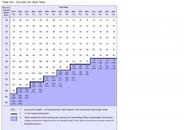Yes, but wouldn't the better strategy for a recreational diver be to dive conservatively instead of pushing up against the NDL's and depending on the fractional content of O2 in emergency gas to ward off impending DCS? Deco limits being somewhat theoretical in the first place. When I hear people using their choice of pony gas as an anti DCS strategy I tend to think the horse is already out of the gate.
yes, I agree completely





